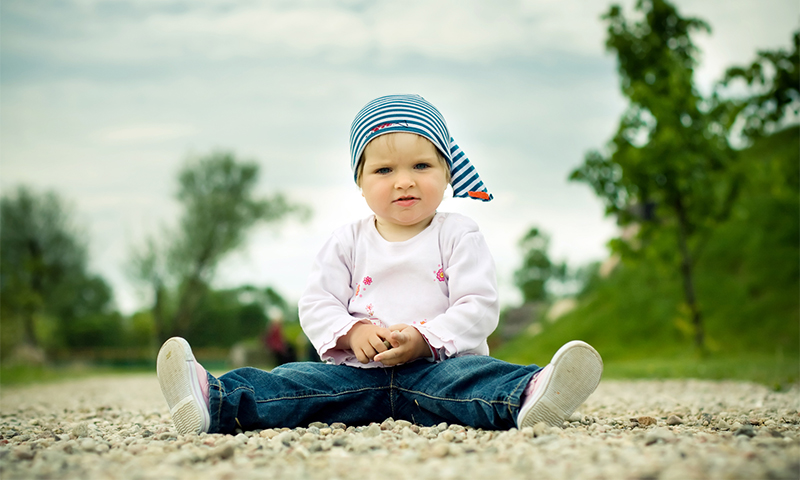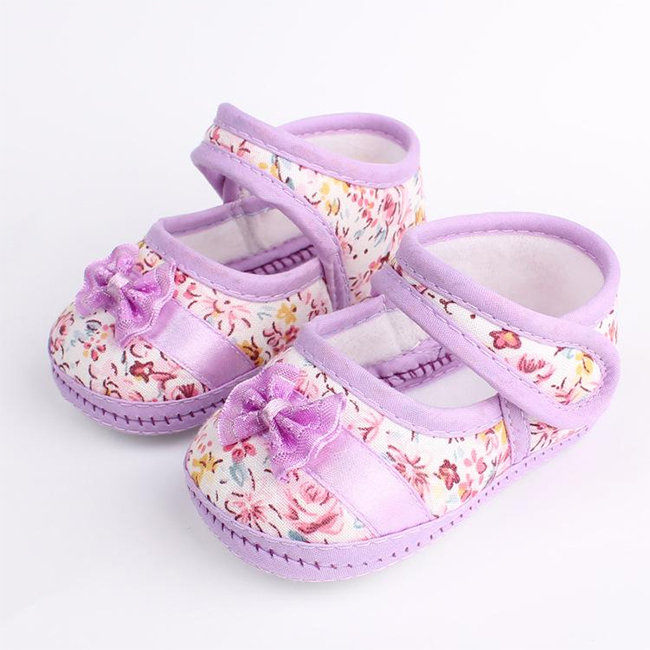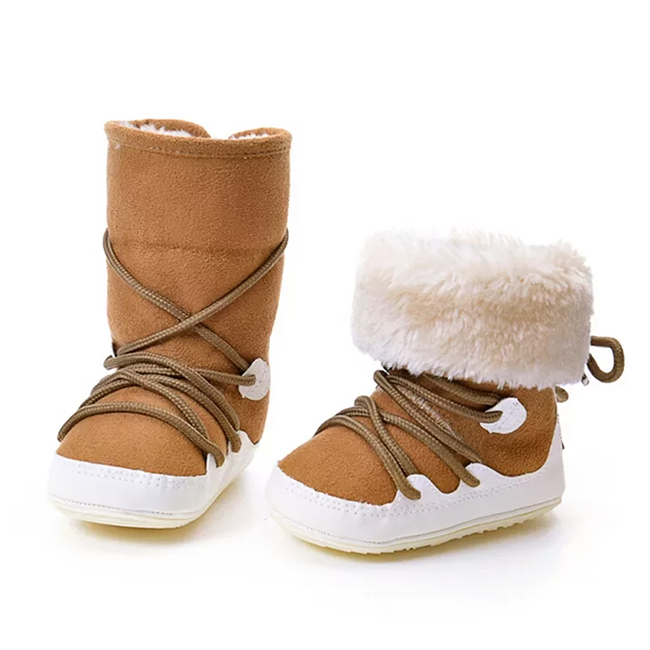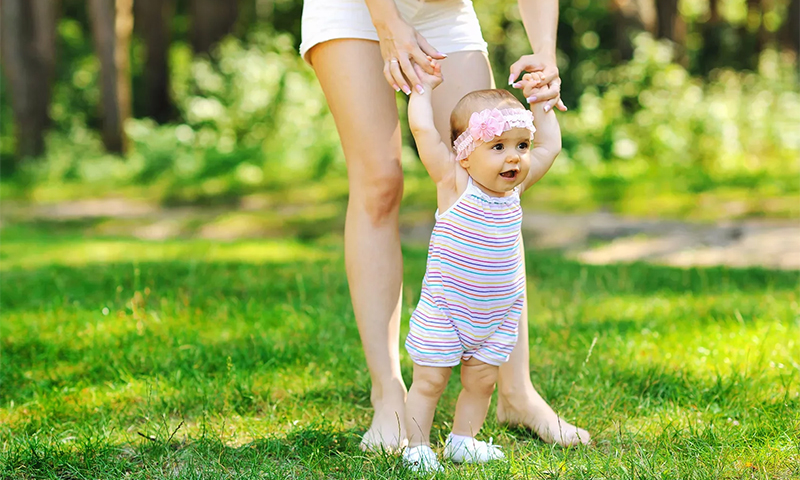Buying the first real shoe for a kid who is just learning to walk is a great event for young parents. True, they immediately have a sea of questions about the materials, shape, stiffness of the sole and the number of fasteners. All this really needs to be taken into account when choosing children's shoes, since the future health of the child largely depends on such trifles.

Content:
The best manufacturers of children's shoes - which company to choose
It is even difficult for an adult to find good shoes that fit comfortably on their feet, not rubbing them or putting them on after the first rain. And to find a suitable pair for the little man is even more difficult, because he can not yet say whether he is comfortable in new shoes.
In addition, his musculoskeletal system is just beginning to form, and the correct development of the foot and gait of the child depends on the shoe in which the first steps are taken.
There are no trifles in choosing the very first shoe, but not all of them are known to caring parents. But they are known to orthopedists, and manufacturers who work with physicians to create sandals, shoes and shoes for the little ones.
These companies include:
- Ecco;
- Crocs;
- Columbia;
- Flamingo;
- Minimen;
- Bambini
Baby shoes of these manufacturers can be taken calmly: it is made from quality materials and takes into account all the anatomical features of the small legs.
We have already considered the best series of orthopedic and daily footwear for babies in our previous articles, but we should not forget that her choice requires an individual approach.
Features tailoring children's shoes

The first shoes for the baby should be comfortable and easy, so that the child can move freely in it, not feel discomfort and stood firmly on his feet. At the same time, a reliable fixation of the foot is required of it in order to avoid unpleasant injuries, because the baby still has a poor control of his body and will fall quite often.
The first "topics" should certainly be:
1. Tight high back;
2. Wide protected toe;
3. Relief rigid sole;
4. Internal instep;
5. Convenient adjustable clasp - preferably such that the baby could not undo it.
Children's shoes should be made mostly of natural materials (leather, fabric, fur) - at least that part of it that is in direct contact with the foot. And no knots or convex seams on the inner surface, so as not to rub the delicate skin.
Types of shoes for kids
Summer

The best time for the first confident steps on the street is summer. The child will need a moderately open and well-breathing shoes: sandals or sneakers with mesh inserts. Ankle must be firmly fixed in them, the toes and heels are protected.
Sandals with a half-open toe are allowed - the baby’s feet will not sweat in them, but you will not have to fear unpleasant injuries.
Pros:
- A wide selection of bright, beautiful models;
- Small weight of footwear;
- Good foot ventilation;
- Easy to fit;
- The ability to adjust the lift with Velcro.
Minuses:
- Shoes for one season;
- Fabric models quickly fade.
Demi-season

Shoes for spring and autumn are closed, often on a thickened sole, with fleece or knitted inner insulation. It can be shoes, low shoes or leather sneakers - always stitched and taped so that the child does not soak his feet.
In general, the autumn footwear is ideal for the first steps: its design fully meets all the requirements for the protection of immature children's feet.
Pros:
- Warm enough even for a cool autumn;
- It is not blown and does not get wet;
- The leg is securely fixed on all sides;
- Rigid relief sole with a “raised” nose well protects the feet and toes;
- Easy to clean.
Minuses:
- Quality shoes are sewn only from genuine leather, so it is not cheap;
- In some models there is no possibility of adjusting the lift and fullness, because of which it is difficult to find the right size.
Winter

It is always difficult to take the first steps in the snow: winter shoes are voluminous, heavy, and the kid himself in warm clothes becomes clumsy.
It makes sense to buy the first pair for frosty weather only if the crumb for the winter can confidently stand on its feet. Otherwise, it is better to suffer until the spring, just having shod the child in felt boots and having limited to walks in a carriage or on a sled.
Children's winter shoes should be very warm, but without the "greenhouse effect." To do this, it is hammered with natural sheepskin (or any other fur), and the surface is covered with natural leather or suede.
It is better to have high boots with long lacing, but you can buy boots or cheaper fabric quilts. Only they must have a few straps or velcro, otherwise the soft top just can not properly fix the leg. Thick relief sole is obligatory - it will save the baby from falling on slippery ice.
Pros:
- In production, mainly natural materials are used;
- The sole is rather thick and does not slip;
- A large number of straps or long lacing allow you to fit shoes on the foot (even taking into account warm socks);
- High tops exclude ingress of snow inside;
- Winter shoes often have a waterproof top.
Minuses:
- The shoes are voluminous and rather heavy, which makes it difficult for the child to walk in it;
- Not all models have a well fixed ankle.
Options for choosing shoes for children

The size
The first thing to do before buying shoes for your baby is to correctly determine the size of his feet. To do this, place the child on a sheet of paper and circle the leg with a pencil, trying to keep it strictly perpendicular. The finished contour is better to immediately increase by 0.5-1 cm, describing it a little wider around the perimeter. Cut out this template and can go with him to the store.
The choice will facilitate and knowledge of standard sizes of shoes, although you still have to measure every pair you like.
In order not to search blindly, it is better to remember the size of your child, both in European and American systems:
1. The length of the foot 10-10.5 cm corresponds to European sizes 17-18 or American 2.5-3.5.
2. 10.5-11.7 cm is number 19 in the euro line and 4-4.5 sizes in the USA.
3. 11.7-12.5 cm - sizes 20 or 5-5.5, respectively.
Remember that babies grow very quickly, so often inspect the baby's legs after walking on the street. If they appear reddened in places where there is contact with shoes, immediately go for the second pair - the size of a larger one.
You should not take shoes at all for growth, otherwise they will not keep their foot properly. The deviation of the shoe size from the actual should not exceed 1 cm.
Materials
For sewing children's shoes, natural and some artificial materials are used: leather, cotton, suede, fur, leatherette, felt, nubuck, polyester, etc. And although the kid will not have time to pull down the first pair, it will grow faster, it is better to fork out for quality model - without synthetics.
1. Ideal - genuine leather. It fits snugly to the leg, providing a good fit, but elastic enough so as not to rub your toes or heels.
2. For the summer, you can choose a thick fabric. Such shoes do not press and breathes well, but does not hold the leg well and often has weak fasteners.
Choosing winter boots, pay attention to the type of insulation. Here are the following options:
1. The membrane is perfect for a wet and not too harsh winter.
2. Tinsuleyt - also has high water resistance, but it warms well even in extreme cold.
3. Sheepskin is an ideal option that will provide the baby’s legs with normal thermoregulation and at the same time allow them to “breathe”.
Sole and instep
A babe who learns to walk needs reliable support under his feet, so choose shoes with a raised, non-slip sole. Flexibility is also important, but only in the middle of the foot, and at the edges maximum rigidity is needed.
Pay attention to the presence of the heel - only it should not be separate, but represent a thickening of the sole and create a height difference between the heel and toe of about 5-7 mm.
It is very important that in the first pair of baby's shoes there was an instep, a small soft knob on the insole on the inside of the foot. It provides additional support for the arch of the foot, reducing the load on the heel and toe, and prevents the development of flatfoot.
Cape shape
Try to choose the first shoes for the baby with a wide closed round toe. It is also desirable that a few millimeters of free space remain above the child’s fingers. This will allow the crumbs to feel comfortable in unusual shoes, and at the same time save him from injury and painful blows.
Even if you buy a summer model, the toe should still perform its protective function. Let it be half-closed, on the one hand, to provide ventilation for the leg, and on the other, not to let the fingers slip forward.
From the open toe is better to immediately give up. One-year-old kids walk uncertainly, often clinging with their fingers and falling literally out of the blue, and those who are used to walkers, and run at all on their toes. So an open toe is not an option.
Backdrops
The ideal backdrop should be tough and high to protect the baby’s weak legs from sprains. Its upper part in the zone of the Achilles tendon is necessarily performed in the form of a soft cushion, excluding the appearance of scuffs.
Ideally, if the backdrop is wide enough and ends slightly above the ankle, this will allow the ankle to be well fixed.
What shoes for baby to choose

1. For the first spring walks, while it is not hot outside, velcro sneakers or leather shoes with thickened soles will do.
2. In the summer, it is better to put your baby in leather sandals with a closed or half-closed toe, a high solid backdrop and a strap covering the ankle.
3. In a rainy autumn it is worth looking at demi-season boots made of genuine leather and fleece or knitted insulation inside. Take a pair of half the size more than necessary, so that shoes can be worn on a warm sock.
4. For a wet southern winter, you can take leather shoes or boots with membrane insulation. But if in your edges severe frosts are not uncommon, take a warmer model - with a sheepskin or tinsuleyt inside.
How much is baby shoes

1. Summer sandals for the youngest can be purchased at prices ranging from 600 to 2,200 rubles. Lightweight sneakers with mesh inserts will be more expensive - in the range of 1400-3800 rubles.
2. Shoes for spring or autumn will cost from 1 to 5-6 thousand rubles. If you need closed shoes, get ready to pay for them from 900 to 4000 rubles.
3. Winter boots in our market are not very widely represented, and the price for them varies between 2,700–4,000 rubles. But the choice of warm shoes for kids is simply huge: you can buy an inexpensive model for 900–1000 rubles or lay out 4–5 thousand for a product of a famous brand.
It will be interesting to friends too








